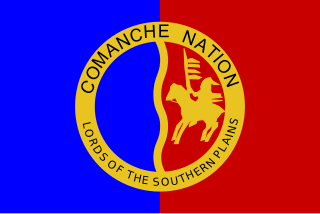
The Comanche or Nʉmʉnʉʉ are a Native American tribe from the Southern Plains of the present-day United States. Comanche people today belong to the federally recognized Comanche Nation, headquartered in Lawton, Oklahoma.
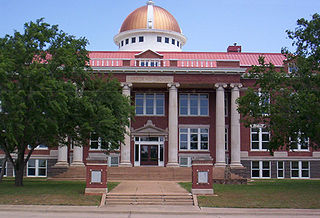
Lawton is a city in and the county seat of Comanche County, in the U.S. state of Oklahoma. Located in southwestern Oklahoma, approximately 87 mi (140 km) southwest of Oklahoma City, it is the principal city of the Lawton, Oklahoma, metropolitan statistical area. According to the 2020 census, Lawton's population was 90,381, making it the sixth-largest city in the state, and the largest in Western Oklahoma.
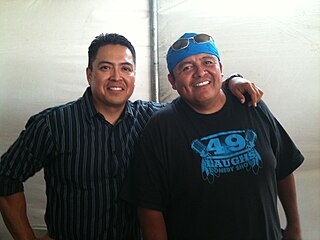
The Navajos are a Native American people of the Southwestern United States.

The Institute of American Indian Arts (IAIA) is a public tribal land-grant college in Santa Fe, New Mexico. The college focuses on Native American art. It operates the Museum of Contemporary Native Arts (MoCNA), which is housed in the historic Santa Fe Federal Building, a landmark Pueblo Revival building listed on the National Register of Historic Places as Federal Building. The museum houses the National Collection of Contemporary Indian Art, with more than 7,000 items.
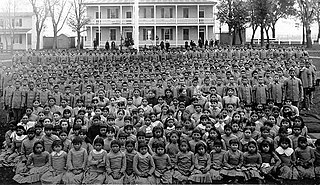
American Indian boarding schools, also known more recently as American Indian residential schools, were established in the United States from the mid-17th to the early 20th centuries with a primary objective of "civilizing" or assimilating Native American children and youth into European American culture. In the process, these schools denigrated Native American culture and made children give up their languages and religion. At the same time the schools provided a basic Western education. These boarding schools were first established by Christian missionaries of various denominations. The missionaries were often approved by the federal government to start both missions and schools on reservations, especially in the lightly populated areas of the West. In the late 19th and early 20th centuries especially, the government paid religious orders to provide basic education to Native American children on reservations, and later established its own schools on reservations. The Bureau of Indian Affairs (BIA) also founded additional off-reservation boarding schools based on the assimilation model. These sometimes drew children from a variety of tribes. In addition, religious orders established off-reservation schools.

The Bureau of Indian Education (BIE), headquartered in the Main Interior Building in Washington, D.C., and formerly known as the Office of Indian Education Programs (OIEP), is a division of the U.S. Department of the Interior under the Assistant Secretary for Indian Affairs. It is responsible for the line direction and management of all BIE education functions, including the formation of policies and procedures, the supervision of all program activities, and the approval of the expenditure of funds appropriated for BIE education functions.
The North American Indian Women's Association (NAIWA) is a non-profit educational and service association, which seeks to promote intertribal communications, betterment of home, family life and community, betterment of health and education, awareness of Indian cultures, and fellowship among North American Indian people. NAIWA was founded in the summer of 1970 and was the first national Native American women's group. Marie Cox (Comanche), from Midwest City, Oklahoma, served as founding president at the inaugural meeting, which was held in Fort Collins, Colorado. During the 1970s adoption reform was one of its greatest concerns. Cox's presidency was followed by Agnes Dill of the Isleta Pueblo in New Mexico in 1973, who was in turn succeeded by Mary Jane Fate from Fairbanks, Alaska, in 1975. Only women from federally recognized Indian tribes can be members.
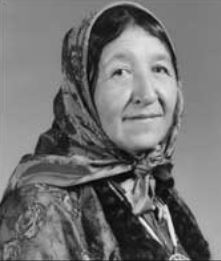
Susie Walking Bear Yellowtail (1903–1981) (Crow-Sioux) was the first Crow and one of the first Native Americans to graduate as a registered nurse in the United States. Working for the Indian Health Service, she brought modern health care to her people and traveled throughout the U.S. to assess care given to indigenous people for the Public Health Service. Yellowtail served on many national health organizations and received many honors for her work, including the President's Award for Outstanding Nursing Health Care in 1962 and being honored in 1978 as the "Grandmother of American Indian Nurses" by the American Indian Nurses Association. She was inducted into the Montana Hall of Fame in 1987 and in 2002 became the first Native American inductee of the American Nurses Association Hall of Fame.
Helen Chupco (Seminole-Muscogee), (1919-2004) was a Methodist missionary, who twice served as president of the Women's Society of Christian Service for the United Methodist Church's Oklahoma Indian Mission. She was elected to the board and served as a vice president to Church Women United in the 1970s. Chupco was also the co-founder of the Tulsa Indian Center. She was one of the first women to serve on the Muscogee Nation National Council when it was reorganized in the 1970s and served for twenty-three years as a councilwoman. In 1992, she was recognized by the Oklahoma State Senate for her tribal leadership.
Dorothy Sunrise Lorentino was a Comanche teacher from Oklahoma. As a child, she won a landmark education judgment against the Cache Consolidated School District of Comanche County, Oklahoma for Native American children to attend public schools rather than government-mandated Bureau of Indian Affairs Schools. It was a precursor case to both the Alice Piper v. Pine School District (1924) which allowed Native American children to attend school in California and Brown v. Board of Education (1954), which decided separate schooling based on race was unconstitutional. Language from her judgment was incorporated into the Indian Citizenship Act (1924). Having won the right to attend public school, she went on to earn credentials as a special education teacher and taught for over forty years. In 1997, she was the first Native American and the first Oklahoman to be inducted into the National Teachers Hall of Fame.

Josephine Myers-Wapp was a Comanche weaver and educator. After completing her education at the Haskell Institute, she attended Santa Fe Indian School, studying weaving, dancing, and cultural arts. After her training, she taught arts and crafts at Chilocco Indian School before joining the faculty of the newly opened Institute of American Indian Arts in Santa Fe. She taught weaving, design, and dance at the Institute, and in 1968 was one of the coordinators for a dance exhibit at the Mexican Summer Olympic Games. In 1973, she retired from teaching to focus on her own work, exhibiting throughout the Americas and in Europe and the Middle East. She has work in the permanent collection of the IAIA and has been featured at the Smithsonian Institution. Between 2014 and 2016, she was featured in an exhibition of Native American women artists at the Museum of Indian Arts and Culture in Santa Fe.
Wendy Ponca is an Osage artist, educator, and fashion designer noted for her Native American fashion creations. From 1982 to 1993, she taught design and Fiber Arts courses at the Institute of American Indian Arts (IAIA) of Santa Fe and later taught at the University of Las Vegas. She won first place awards for her contemporary Native American fashion from the Santa Fe Indian Market each year between 1982 and 1987. Her artwork is on display at IAIA, the Los Angeles County Museum of Art, the Philbrook Museum of Art and the Smithsonian Institution's National Museum of the American Indian.

Mary Jane Fate was a Koyukon Athabascan activist. She was a founding member of the Fairbanks Native Association and the Institute of Alaska Native Arts and worked as a lobbyist for the Alaska Native Claims Settlement Act. She co-founded the Tundra Times newspaper and served as a director of the corporate board for Alaska Airlines for over two decades. She served as co-chair of the Alaska Federation of Natives between 1988 and 1989, the first woman to serve in the capacity, and was the third president and a founding member of the North American Indian Women's Association. Fate has served on various commissions and national studies of issues which affect indigenous people. She was the project manager of a study of women and disability, served as the only indigenous member of the U.S. Arctic Research Commission and was a member of U.S. Census Advisory Committee on indigenous populations. She has received numerous honors and awards for her activism on behalf of Native Americans and was inducted into the Alaska Women's Hall of Fame in 2014.

Veronica Murdock is an American civil servant and of Shasta–Mohave ancestry, as a member of the Colorado River Indian Tribes. She served in the tribal administration, including as vice chair, of the Colorado River Tribe from 1969 to 1979 and between 1977 and 1979 as the first woman president of the National Congress of American Indians. From 1980 to 2004, she served as a civil service employee with the Bureau of Indian Affairs.

Sandy Fife Wilson is a Muscogee (Creek) art educator, fashion designer and artist. After graduating from the Institute of American Indian Arts and Northeastern Oklahoma State University, she became an art teacher, first working in the public schools of Dewey, Oklahoma. When Josephine Wapp retired as the textile instructor at the Institute of American Indian Arts, Wilson was hired to teach the design courses. After three years, in 1979, she returned to Oklahoma and taught at Chilocco Indian School until it closed and then worked in the Morris Public School system until her retirement in 2009.
Mary Adair is a Cherokee Nation educator and painter based in Oklahoma.
Margaret Wood is a Navajo-Seminole fiber artist, fashion designer, and quilt maker. Though she began her career as a teacher and librarian, Wood switched to fiber arts to allow her to express her creativity. She published Native American Fashion: Modern Adaptations of Traditional Designs, which for four decades was the only book focused on traditional native clothing and how it was modified in contemporary design. From 1990, Wood primarily became a quilter, displaying her works at numerous featured exhibitions throughout the United States, including such venues as the American Craft Museum in Manhattan; the Heard Museum of Phoenix, Arizona; the Riverside Metropolitan Museum of Riverside, California and the Wheelwright Museum of the American Indian of Santa Fe, New Mexico, among many others.
Jennie R. Joe is an American academic, medical anthropologist, and fellow of the Society for Applied Anthropology. Initially trained as a nurse, she was one of the health clinic workers during Occupation of Alcatraz in 1969. She is a professor in the Departments of Family and Community Medicine and American Indian Studies at the University of Arizona. Joe was one of the inaugural board members for the Smithsonian's National Museum of the American Indian and serves on the board of the Urban Indian Health Commission.
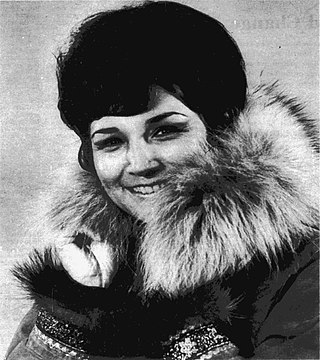
Laura Mae Bergt was an Iñupiaq athlete, model, politician, and activist for the Iñupiat and other Indigenous Alaskans. Born in the Northwest Arctic Borough of Alaska to bi-racial parents, she grew up in Nome and Kotzebue before attending high school in Sitka. Involved in the Native Olympic movement, she was both a nine-times winner of the Arctic Circle blanket toss event and served as chair of the World Eskimo Indian Olympics in 1966. She worked as a promoter for the new state of Alaska attending trade shows and making marketing appearances as a spokeswoman and guest on radio and television programs. From the 1960s, she worked in various policy positions at the tribal, local, state, and national level to address issues like disability, education, employment opportunities, housing, and poverty, and promoting the rights of Indigenous people.












